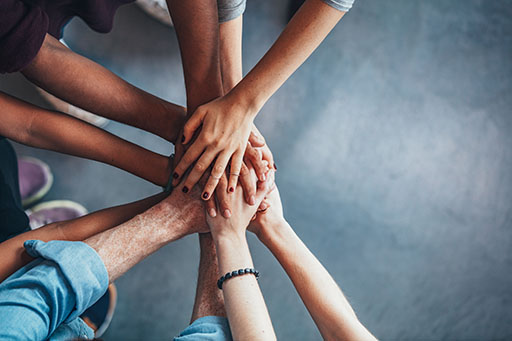6 The social support strategy
Social support may not seem like a psychological technique, but evidence shows its potential impact in preventing and reducing burnout amongst athletes is extremely powerful (e.g. Cresswell, 2009).
Social support can mediate some of the stresses that contribute to burnout. Researchers have investigated whether the perception of support in itself can help manage burnout – you will explore this in the following activity.
Activity 5 The power of perception: do you feel supported?
Read through and respond on a scale of 1–4 to these statements drawn from the Social Provisions Scale (Cutrona and Russell, 1987). Think about to what extent each statement describes your current relationships with sport and exercise colleagues, where 4 = strongly agree and 1 = strongly disagree.
- There are colleagues I can depend on to help me if I really need it.
- There is no one I can turn to for guidance in times of stress.
- I have close relationships that provide me with a sense of emotional security and well-being.
- There is a trustworthy person I could turn to for advice if I were having problems.
- There are colleagues who I can count on in an emergency.
Why might perceptions of social support, as partly explored in the above statements, help manage burnout?
Discussion
Social support can be provided by many different people around an athlete experiencing burnout (e.g. coach, teammates, medical/science support team, friends or family). Being able to talk to someone about how burnout is making them feel may make them feel less isolated. Perhaps knowing that there is someone to talk to and to listen to them can contribute to an athlete feeling more positive.
Notice how in the list of statements above, item 2 would be scored in reverse compared to the others, i.e. if you ‘strongly disagree’ with item 2 you would respond with ‘1’. But when it comes to assigning scores to each of the other questions, you would score them as ‘4’.
An average score across all questions is then used to determine your perception of support. An average of between 3 and 4 would indicate strong feelings of support.
DeFreese and Smith (2013) measured perceived social support and burnout with a questionnaire (as above but with a greater number of items) across 63 teams with athletes aged 18–25 years. Their main findings suggested that the perception of available support, regardless of how much support was actually received, was an important correlate of burnout (as measured by the ABQ). It appears then, that an important focus in managing burnout is to help people feel that they are supported; in the next section you will explore how this might partly be achieved.
DeFreese and Smith (2013) explain their interesting findings with reference to Self-determination theory (SDT) (Session 5). The process of athletes partly satisfying their SDT needs (relatedness, autonomy and competence) through social support is thought to be important for athletes in helping to manage burnout and their overall well-being.

